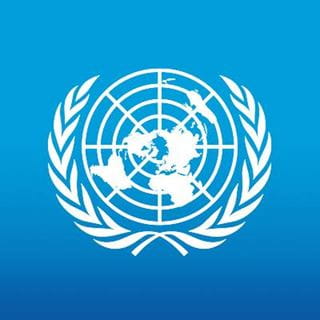The Western Balkans: Emerging Key Players
In response to authorities' efforts to combat trafficking, criminal organisations are developing increasingly sophisticated strategies and multiplying trafficking routes. Eastern Europe and West Africa have thus become key hubs for the cocaine trade, enabling traffickers to transport drugs while bypassing traditional routes from South America (Colombia, Peru, Bolivia) to Western Europe. Similarly, the rise of Mexican cartels in the global market has altered the trafficking flows of heroin and methamphetamine.
This corridor is used by organised criminal groups that exploit the port infrastructure of the Balkans, particularly in Albania, Serbia, and Montenegro, to transport large quantities of drugs to Western Europe. Balkan criminal groups have established strong ties with South American cartels, ensuring a steady supply of cocaine. They have adapted to changes in surveillance and drug seizures by diversifying their routes, using commercial ships, homemade submarines, and even drones to transport drugs. "These networks operate beyond geographical borders, sharing resources, services, and information on smuggling methods and routes from the source to transit and distribution countries," highlights the UNODC, the United Nations Office on Drugs and Crime. Criminals exploit every flaw in the financial system to launder profits from trafficking. Legal industries such as real estate, casinos, and the luxury trade are often used to recycle this money.
Moreover, in some regions, cartels infiltrate the local economy by financing infrastructure or social services, gaining popular support and making their eradication more challenging (UNODC, World Drug Report 2024 - United Nations publication, 2024). In 2024, EUROPOL successfully dismantled one of the Balkan drug cartels. Nearly 40 people were arrested, and eight tons of cocaine were seized following a four-year international police operation targeting a criminal network trafficking large quantities of drugs from South America to Europe via West Africa and the Canary Islands. Cooperation between nine national law enforcement agencies—Brazil, Belgium, Croatia, Germany, Italy, Serbia, Spain, Turkey, and the United Arab Emirates—was "crucial to capture the network" reminds EUROPOL.
 Evolution of the global cocaine production between 1994 and 2022
Evolution of the global cocaine production between 1994 and 2022Market Expansion and New Security Challenges
The rise of synthetic drugs, such as methamphetamine and fentanyl, presents new challenges for law enforcement. Unlike traditional drugs, these substances can be locally produced in clandestine laboratories, often located in areas with weak state control (such as Myanmar or certain regions of Mexico), making their traceability more complex. Methamphetamine has become the leading synthetic drug in Asia and North America. Similarly, fentanyl, a synthetic opioid 50 times more powerful than heroin, has caused a surge in overdoses in North America due to its extreme potency and its incorporation in other drugs without the consumers' knowledge. Criminal groups exploit the weak regulation of international trade in certain chemical precursors used to manufacture synthetic drugs. These substances are often diverted from the pharmaceutical or chemical industries and transported through countries with less stringent controls. Countries such as China, India, and Mexico are frequently cited as starting points for these precursors. In 2024, an international operation coordinated by INTERPOL and targeting drug trafficking in Southeast Asia resulted in record seizures of synthetic drugs valued at approximately 1.05 billion US dollars.
The illicit drug trade is one of the main drivers of organised crime, which diversifies its activities to include money laundering, wildlife trafficking, and the illegal exploitation of natural resources. This dynamic intensifies corruption and undermines local governance.
The Digitalisation of the Illicit Trade: The Role of the Darknet and Cryptocurrencies
Drug traffickers take advantage of digital technologies to diversify their distribution networks and escape from authorities. The darknet has become a parallel market. Clandestine platforms allow drugs to be bought and sold anonymously. With encryption and the use of cryptocurrencies like Bitcoin, transactions largely bypass traditional banking systems and government controls.
Despite the closure of certain platforms (such as Silk Road), new markets continue to emerge. An increasing number of drug trafficking transactions are being conducted through encrypted messaging apps like Telegram, WhatsApp, and Signal. Dealers also use social media to attract customers, particularly among young people, making access to substances easier than ever.

Cooperation, Surveillance, and the Fight Against Corruption
The UNODC emphasises the importance of coordinated action and an integrated, transnational approach between different states to combat this criminal network and reduce the impact of cocaine trafficking on the security and stability of the Balkans and Europe. Subjects central to the agenda include:
- Strengthening police and judicial cooperation between South American countries, the Balkans, and the European Union
- Increasing surveillance of ports and logistical infrastructures, particularly through advanced technologies like big data analysis, facial recognition, and anti-corruption programmes, because traffickers rely on local complicities to facilitate the transport of shipments.
"It is essential to use the United Nations' convening power to bring together officials from both regions to share information, best practices, and experiences to help member states understand and ultimately dismantle the criminal groups involved in cocaine trafficking" emphasised Michael OSMAN from the UNODC's Global Programme on Criminal Network Dismantlement during a meeting held in Sarajevo at the end of 2024 which brought together representatives from Albania, Bosnia and Herzegovina, Brazil, Colombia, Croatia, Ecuador, Montenegro, the Netherlands, North Macedonia, and Turkey, as well as experts from EUROPOL, the Maritime Analysis and Operations Centre (narcotics) - MAOC (N), the U.S. Drug Enforcement Administration, the European Drugs Agency or the British Embassy.

